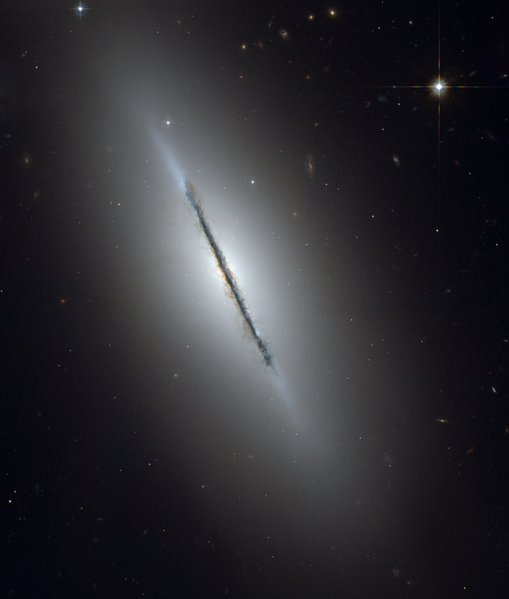Fișier:Ngc5866 hst big.png
Aspect

Mărimea acestei previzualizări: 509 × 599 pixeli. Alte rezoluții: 204 × 240 pixeli | 408 × 480 pixeli | 652 × 768 pixeli | 870 × 1.024 pixeli | 1.739 × 2.048 pixeli | 3.190 × 3.756 pixeli.
Fișier original (3.190 × 3.756 pixeli, mărime fișier: 25,78 MB, tip MIME: image/png)
Istoricul fișierului
Apăsați pe Data și ora pentru a vedea versiunea fișierului trimisă la momentul respectiv.
| Data și ora | Miniatură | Dimensiuni | Utilizator | Comentariu | |
|---|---|---|---|---|---|
| actuală | 16 Șcurtu 2009 18:38 |  | 3.190x3.756 (25,78 MB) | Spencer | {{Information |Description={{en|1=From original NASA press release: :This is a unique view of the disk galaxy en:NGC 5866 tilted nearly edge-on to our line-of-sight. Hubble's sharp vision reveals a crisp dust lane dividing |
Utilizarea fișierului
Următoarea pagină folosește acest fișier:
Utilizarea globală a fișierului
Următoarele alte proiecte wiki folosesc acest fișier:
- Utilizare la ab.wikipedia.org
- Utilizare la ace.wikipedia.org
- Utilizare la af.wikipedia.org
- Utilizare la af.wikibooks.org
- Utilizare la af.wikiquote.org
- Utilizare la af.wiktionary.org
- Utilizare la ak.wikipedia.org
- Utilizare la als.wikipedia.org
- Utilizare la am.wikipedia.org
- Utilizare la am.wiktionary.org
- Utilizare la ang.wikipedia.org
- Utilizare la ang.wiktionary.org
- Utilizare la an.wikipedia.org
- Utilizare la an.wiktionary.org
- Utilizare la arc.wikipedia.org
- Utilizare la ar.wikipedia.org
- Utilizare la ar.wikibooks.org
- Utilizare la ar.wikinews.org
- Utilizare la ar.wikiquote.org
- Utilizare la ar.wikisource.org
- Utilizare la ar.wikiversity.org
- Utilizare la ar.wiktionary.org
- Utilizare la arz.wikipedia.org
- Utilizare la ast.wikipedia.org
- Utilizare la ast.wiktionary.org
- Utilizare la as.wikipedia.org
- Utilizare la av.wikipedia.org
- Utilizare la ay.wikipedia.org
- Utilizare la az.wikipedia.org
- Utilizare la az.wikibooks.org
- Utilizare la az.wikiquote.org
- Utilizare la az.wikisource.org
- Utilizare la az.wiktionary.org
- Utilizare la bat-smg.wikipedia.org
- Utilizare la ba.wikipedia.org
- Utilizare la bcl.wikipedia.org
- Utilizare la be-tarask.wikipedia.org
- Utilizare la beta.wikiversity.org
- Utilizare la be.wikipedia.org
- Utilizare la be.wikibooks.org
Vizualizați utilizările globale ale acestui fișier.
